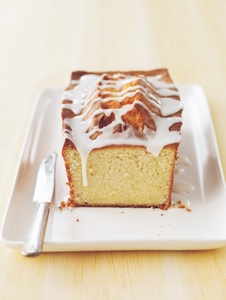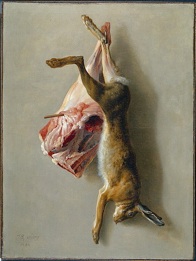Clearly Art, Glassware, Handmade Crystal, Hand-made Crystal, Hand Made Crystal, Hand Blown, Germany, Italy, Robert Parker Glass, Brunello Technico, Consorzio del vino del Brunello di Montalcino, Commissioned by Robert Parker, Roulette Whisky Tumbler, Whiskey Tumbler, Spinning Glass, Design, Unique Glassware, Form and Function, Individual Glassware, Glass Decanter, Decanter in a Glass, Pirelli Canada, Amofo di Cambio, Tuscany, Joe Colombo, Marco Zanuso, and Cini Boeri
Fresh English Pea Salad
Recipe Courtesy of Hugo Matheson of The Kitchen restaurant, Boulder, CO
This is a great salad in the early spring, when the peas are still quite nutty. As it gets closer to summer and the peas are a lot sweeter, substitute feta cheese for the pecorino.
Yield
4 - 6 servings
Ingredients
- 1 pound fresh English peas (usually still in the pod)
- 1 bunch fresh mint
- 1/2 bunch arugula
- Juice of at least 1 lemon
- 4 tablespoons olive oil
- Salt and pepper
- 1/4 pound pecorino cheese
Directions
1) Remove peas from pods. Bring a pot of very salty water to boil. Add peas and boil for about 1 minute, just until color changes to a consistent bright green. Remove and cool in ice water or under running cold water. (The cold water stops the cooking and keeps the peas bright green.)
2) Wash and dry mint and arugula. In a bowl, combine peas with mint and arugula. Add juice of 1 lemon, olive oil, and a pinch of salt and pepper. Shave half of the pecorino onto a cutting board and reserve. Shave remaining pecorino, chop, and add to salad; toss. Taste and adjust seasoning with more lemon juice or olive oil as desired.
3) Serve immediately, topped with reserved shaved pecorino cheese.

Lemon Lemon Loaf
Recipe Courtesy of Matt Lewis of Baked NYC, Red Hook, Brooklyn
Sometimes simplicity speaks volumes. Our lemon loaf recipe is very straightforward. We do not add poppy seeds, pecans, or any other extraneous ingredient. We really feel that the most important aspect of a lemon loaf is the zingy lemon flavor, and we accentuate it by using a combination of freshly squeezed lemon juice, freshly grated lemon zest, and a mildly sweet lemon syrup. The sour cream gives this loaf a subtle tang and a dense, moist crumb that cannot be achieved with yogurt.
If you want to increase the lemony goodness of these cakes, add the simple glaze after the syrup has set and the cakes are cool. This loaf freezes extremely well, so you can double the recipe and make a few extra loaves.
A Baked Note: for zesting purposes, we always recommend using an organic fruit, free of chemicals or pesticides that might reside deep in the rind.
Yield
2 loaves (9-by-5-by-3-inch)
Ingredients
For the lemon cake
- 1 1/2 cups cake flour
- 1 1/2 cups all-purpose flour
- 2 teaspoons baking powder
- 1/4 teaspoon baking soda
- 1 teaspoon salt
- 2 1/4 cups sugar
- 8 large eggs, at room temperature
- 1/4 cup grated lemon zest (from about 4 lemons)
- 1/4 cup fresh lemon juice
- 2 cups (4 sticks) unsalted butter, melted and cooled
- 1/2 cup sour cream, at room temperature
- 2 teaspoons pure vanilla extract
For the lemon syrup
- 1/3 cup fresh lemon juice
- 1/3 cup sugar
For the lemon glaze (optional)
- 2 cups confectioners sugar, sifted, or more if needed
- 4 to 6 tablespoons fresh lemon juice
Directions
Make the lemon cakes
1) Preheat the oven to 350 degrees F. Spray the sides and bottom of two 9-by-5- by-3-inch loaf pans with nonstick cooking spray. Line the bottom with parchment paper and spray the paper.
2) Sift both flours, baking powder, baking soda, and salt together in a medium bowl.
3) Put the sugar, eggs, lemon zest, and lemon juice in a food processor and pulse until combined. With the motor running, drizzle the butter in through the feed tube. Add the sour cream and vanilla and pulse until combined. Transfer the mixture to a large bowl.
4) Sprinkle in the flour mixture, one third at a time, folding gently after each addition until just combined. Do not overmix.
5) Divide the batter evenly between the prepared pans. Bake in the center of the oven for 20 minutes, rotate the pans, reduce the oven temperature to 325 degrees F., and bake for another 30 to 35 minutes, or until a toothpick inserted in the center of the loaf comes out clean.
6) Let cool in the pans for 15 minutes.
Meanwhile, make the lemon syrup
1) In a small saucepan over medium heat, heat the lemon juice and sugar until the sugar is completely dissolved. Once dissolved, continue to cook for 3 more minutes. Remove from the heat and set aside.
2) Line a half sheet pan with parchment paper and invert the loaves onto the pan. Use a toothpick to poke holes in the tops and sides of the loaves.
3) Brush the tops and sides of the loaves with the lemon syrup. Let the syrup soak into the cake and brush again. Let the cakes cool completely, at least 30 minutes.
Note: the soaked but unglazed loaves will keep, wrapped in two layers of plastic wrap and frozen, for up to 6 weeks.
If you like, make the lemon glaze
1) In a small bowl, whisk together the confectioners’ sugar and 4 tablespoons of the lemon juice. The mixture should be thick but pourable. If the mixture is too stiff, add up to another 2 tablespoons lemon juice and whisk again, adding small amounts of lemon juice and/or confectioners’ sugar until you get the right consistency. Pour the lemon glaze over the top of each loaf and let it drip down the sides. Let the lemon glaze harden, about 15 minutes, before serving.
Note: the glazed loaves will keep for up to 3 days, wrapped tightly in plastic wrap, at room temperature.
Simple Roast Leg of Lamb “Lulu Peyraud”
Recipe Courtesy of Erik Desjarlais of Evangeline restaurant, Portland, ME
The cooking of Lulu Peyraud, the matriarch of Domaine Tempier in Bandol, France, is my inspiration for this lamb dish. Her approach to cooking was essentially the “mother’s milk” that nurtured me when I was a young cook. Heavy on simplicity, with olives and garlic, the flavors are the quintessential accoutrement to lamb. Peeled and roasted new potatoes would be a perfect addition, along with some braised bitter greens. The leg itself should offer up a wide range of doneness, based on your guests needs. Everything from perfect “a point” to well done and crispy toward the shank bone.
Total Time
About 4 hours
Ingredients
For the lamb:
- 1 7lb bone in leg of lamb, pelvic bone removed
- 1 onion, chopped
- 1 white leek, chopped
- 2 heads garlic split along equator
- 1 cup pitted Provencal black olives
- 5 salted anchovy fillets, rinsed and chopped
- 2 cups Provencal white wine (a dry white wine)
- 5 sprigs thyme
- 5 sprigs parsley
- olive oil
- butter
- salt and pepper
For the sauce:
- 1 cup dry white wine
- 1/2 cup pitted Provencal olives chopped
- 3 salted anchovy fillets, rinsed and chopped
- 3 shallots, minced
- chopped parsley
- 2 tablespoons cold unsalted butter
Directions
1) Allow the lamb leg to sit out at room temperature for 2 hours. This part is crucial. Meanwhile, prepare your other ingredients. Preheat oven to 425 degrees.
2) Heat a heavy bottomed 9 quart pan (such as a Le Crueset) over medium heat. Rub the leg with olive oil and liberally season with salt and cracked pepper. Pour 1/8” olive oil in pan, and as soon as it smokes, add the leg. Add about a 1/4 cup of butter and brown the leg on all sides, slowly. This should take about 30 minutes. If the butter begins to darken, degrease the pan and add new oil and butter. (Noisette is okay, but noir is not.)
3) Once the leg is browned, remove from the pot, degrease the pot, and add the onion, leek, parsley, olives, anchovies, thyme, and garlic. The juices from the vegetables will deglaze the fond from the pot. Place the lamb leg back in the pot sprinkle with a bit of the white wine, and place in the oven. Roast for 20 minutes then turn the oven down to 300 degrees. Roast for another 50 minutes, deglazing the pan with white wine as you go. You want to create a glaze, then de-glaze.
4) When a meat thermometer reads 128 degrees in the fattest part of the leg, pull it out of the oven and out of the pot. Let it rest for 10 minutes on a cutting board. While it rests, deglaze the pot again over high heat with the one cup of the reserved white wine, and scrape up all the tasty bits from the bottom with a wood spoon. Strain through a chinois, and reserve the liquid. Discard the spent aromatics. Reduce the liquid in a saucepan and once it coats a spoon, add the shallots, olives, anchovies, parsley, and butter. Season to taste, adding a few drops of sherry vinegar to sparkle it up a bit.
5) Carve the leg at the table for the “ooh…ahhhh” effect, and serve the sauce in a tureen with a ladle. (Make sure your mother-in-law gets to pick off little bits of crispy fat, seasoned with fleur de sel, before it arrives to the table.)
SPRING RECIPES

WHAT
Four Spring recipes.
WHY
Spring has finally sprung and you have the chance to eat the bounties of a new season and prepare them using some of our favorite chefs’ and baker’s recipes.
April 1, 2010




Recipes from Chefs and a Baker







Rabbit Saddle, Ricotta Cake, Fava Beans, and Boston Bibb Lettuce
Recipe Courtesy of Chef Odette Fada and Chef de Cuisine Matteo Bergamini at SD26
Yield
6 servings
Ingredients
For the rabbit:
- 3 rabbit saddle, deboned
- 1/2 onion, sliced
- 2 tablespoon green olives, chopped
- 2 pinches fresh marjoram, minced
- 6 tablespoons olive oil
- 1/2 cup fava beans, blanched.
- 1/2 head bibb lettuce
- salt
- pepper
For the ricotta cake:
- 500 grams Ricotta
- 75 grams “00” flour
- 1 egg
- 1 egg yolk
- 2 tablespoons Pecorino Romano cheese, grated
- 1 teaspoon salt
- 1 teaspoon pepper
Ingredients
For the ricotta cake
1) Mix together the ricotta, “00” flour, eggs, pecorino romano cheese, salt and pepper. Place in a sheet pan so the mixture is about 1/2 inch thick. Wrap tightly in plastic wrap.
2) Steam for about 8 to 12 minutes.
3) Let cool and cut into rectangles (1 1/2 inches by 4 inches).
4) Place the ricotta cakes on a lightly oiled sheet pan. Place in a 350 degree F oven and cook till warm.
For the saddle of rabbit
1) Heat two ounces of the olive oil in a sauté pan. Sweat the onion till soft. Add the green olives and marjoram. Set aside.
2) Flatten the rabbit saddles with a meat mallet. Season with salt and pepper.
3) Place the onion mixture in the bottom-middle of the rabbit saddle and roll tightly. Tie with butchers twine.
4) Heat two ounces of olive oil in a sauté pan. Sear the rabbit saddles on all sides until golden and cooked through. The rabbit saddles will take approximately 12 minute to cook through. (Note: If the outside of the rabbit looks like it is getting too dark, you can add a little broth.) Let rest before slicing.
5) In a separate pan heat two ounces of olive oil. Add the bibb lettuce and let wilt. Add the fava beans and cook till warm. Season with salt and pepper.
6) Slice the rabbit and serve over the sauteed fava beans and bibb lettuce and ricotta cake.



















